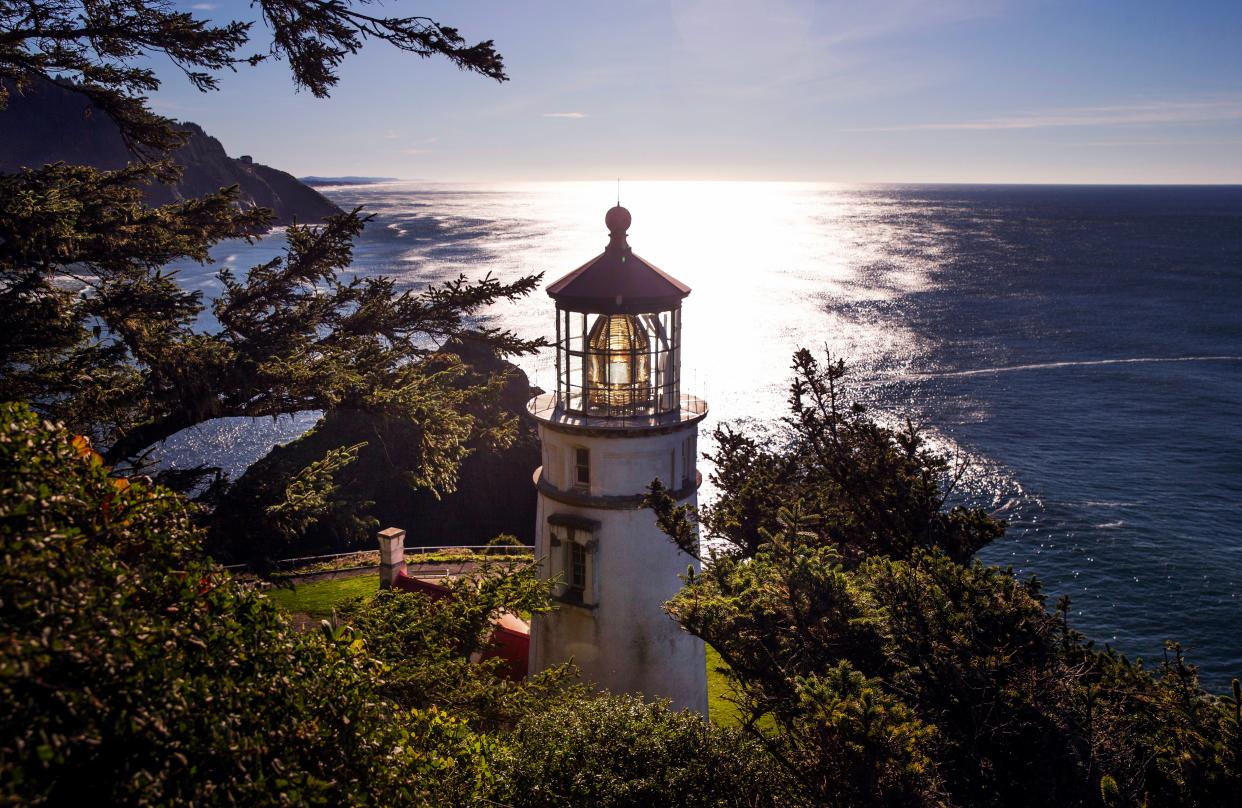Biden's big wind bet: Two sites picked for controversial Oregon offshore wind project

The Bureau of Ocean Energy Management announced Tuesday its final selection of two areas off Oregon's coast for offshore wind energy production.
The Biden administration has been pursuing locations around the country to lease to companies that want to set up offshore wind farms.
BOEM, the agency tasked with this initiative, selected two locations in Oregon for this: a 95.6 square-mile area 32 miles from shore that stretches from Reedsport to Florence, and a 209.1 square-mile area 18 miles from shore that stretches from Brookings to Pistol River.
The final area is 38.4 square miles smaller than the area originally considered when the Register-Guard previously covered the issue in December. BOEM chose to remove some of the area south of Brookings because the National Oceanic and Atmospheric Administration uses it for survey work and because of seafloor habitats in the area.
BOEM estimated the two areas together could produce between 8.3 and 12.4 million MWh/year of power if operating between 40% and 60% capacity. Oregon residents and businesses in total consume approximately 54.3 million MWh/year, according to Find Energy.
Before finalizing the areas, the BOEM received over a thousand public comments. Some comments were positive, with people voicing support for more clean energy and job creation.
Most comments were negative, though, and included tribes and other locals concerned over disturbing the natural feel and history of the area, business interests concerned the interrupted views would harm tourism, and tribes, conservationists and fisheries concerned about the potential for harm to fish and other wildlife.
Gov. Tina Kotek issued a statement Tuesday where she both expressed support for the project and said that the state would work to better include tribes and coastal residents in planning.
"Offshore wind is likely to play an important role in meeting our state’s growing energy demand and goal of 100% renewable energy by 2040,” she said. "We will continue to promote active engagement with Tribal nations, local communities, and other ocean users in the state."
The Confederated Tribes of the Coos, Lower Umpqua, and Siuslaw Indians said they were "extremely disappointed" in the BOEM decision to proceed with wind production in "areas that are within the Tribe’s ancestral territory, contain viewsheds of significant cultural and historic significance to the Tribe, and are important areas for Tribal fishing."
“BOEM’s press release states that it has ‘engaged’ with the Tribe, but that engagement has amounted to listening to the Tribe’s concerns and ignoring them," Tribal Council Chair Brad Kneaper said in the tribe's press release.
"(BOEM) has failed to assure that wind energy development will do good and not harm the Tribe, its members, and the greater coastal community. The Tribe will not stand by while a project is developed that causes it more harm than good — this is simply green colonialism.”
The next step, which is the final step of the "planning and analysis" phase for one of BOEM's offshore wind projects, is to conduct an environmental assessment of the two selected areas. As part of that assessment, BOEM is opening a new period for public comment that will be open for 30 days beginning Wednesday, Feb. 14.
People and organizations interested in commenting should search for Docket No. BOEM-2023-0065 on regulations.gov or mail comment addressed to Chief, Environmental Assessment Section, Office of Environment, Bureau of Ocean Energy Management, 760 Paseo Camarillo, Suite 102, Camarillo, California 93010. There will be at least one more public comment period later in the process if BOEM chooses to go forward with a lease.
Alan Torres covers local government in Lane County for the Register-Guard. He can be reached over email at atorres@registerguard.com or on X @alanfryetorres.
This article originally appeared on Register-Guard: Oregon offshore wind proposal meets resistance as two areas are picked

